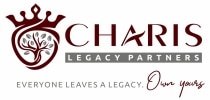Financial legacy goals require building up your wealth surplus, which is the amount of wealth over and above the amount needed for retirement spending. If you’ve reached a point of maxing out retirement savings vehicles like 401ks and IRAs and you still have discretionary income to save, you want to be strategic about the next best places to save, keeping in mind your legacy goals.
The thoughts of some investors may immediately turn to tax-deferred annuities; in general, this is usually not the best option for those with strong legacy goals, a point about which I will expand upon in a future blog post. At this point, aside from tax-advantaged savings vehicles for specific purposes (for example, contributing to a 529, which can only be used for qualified education expenses), your only remaining option is saving in a regular, taxable (non-tax advantaged) brokerage account. Though taxable brokerage accounts obviously lack the specific benefits of tax-advantaged savings vehicles, there are still strategies that can be used here to leverage these accounts to maximize your legacy giving return on investment (ROI).
One caveat I need to make upfront here: any time we deal with topics that touch upon taxes, none of the content in this post should be construed as tax advice. Please discuss these strategies with your tax advisor first.
What is asset location?
Having said that, when using taxable brokerage accounts, it is important to recognize that not all investments are as tax efficient as others. Given that taxable brokerage accounts lack the tax shelter inherent to an IRA, we need to be strategic about which assets we’re placing in these accounts; this is called asset location.
In the financial services industry, we tend to oversimplify tax-efficient strategies (for example, tax-deferred IRAs help limit the burden of taxes while brokerage accounts do not); while there are certainly savings vehicles that provide greater tax benefits, as with most things in life, the reality of investing in a strategically tax efficient manner is not so black and white. You will hopefully have multiple types of savings vehicles, especially as you get older and begin accruing more assets; this diversity of accounts actually provides flexibility in retirement to manage your tax situation more precisely from year to year.
And by having certain assets in certain savings vehicles, you can be strategic about the tax efficiency of your portfolio. Asset location seeks to make the most of every dollar by considering the tax implications of each investment in each savings vehicle.
For example, bonds tend to be tax-inefficient relative to stocks, so we want to avoid having bonds in taxable accounts, if possible. Think about it this way: most of the return of a bond is in the form of interest that gets kicked off over time. That interest is fully taxable at ordinary income rates, so it just gets added on top of all other income and taxed at your highest marginal rate.
If you’re in the earlier stages of your career or retired this is less of a concern since most people are not in their highest earning years at this point. While still not ideal, the bigger concern is for those in their pre-retirement years (usually between the ages of about 50 and 65). This stage consists of the peak earning years for most people, so this interest can often be taxed at very high rates if not sheltered from taxes in an IRA.
On the other hand, most of the return for equities is in the form of growth over time, and those capital gains are not taxed until those stock positions are sold, so there is already some tax-deferral baked in. Even the dividends that get kicked off from equities are taxed at the lower capital gains rates if the dividends are considered qualified, and most dividends from US corporations are qualified.
What about municipal bonds?
Some may wonder about using tax-exempt municipal bonds in a taxable account to avoid paying taxes on the interest. Keep in mind, though, that municipal bonds have a discounted yield relative to taxable bonds.
If a given taxable bond pays 3% interest, an equivalent municipal bond may only pay 2.5% because the municipalities issuing these bonds know you don’t have to pay taxes on that interest, so the municipal market supports a lower yield. Tax-exempt municipal bonds only make sense when you’re in a high enough tax bracket to justify that lower yield, and Morningstar research indicates this threshold is crossed when you get into the 32% federal bracket. Even then, you’re still better off using taxable bonds in a tax-sheltered IRA if you have the available IRA shelf space.
Tax implications of active funds
Something else to keep in mind when it comes to asset location is whether you’re investing in passively managed funds or actively managed funds. There are a few implications of investing in one type versus the other, but first, let’s talk about what the difference is between passively managed and actively managed funds.
An actively managed fund is a fund with the goal of beating the market (or a relevant index). The fund manager of an actively managed fund makes trading decisions with the goal of bringing in the highest returns while staying within the parameters of the fund. For example, a large-cap fund generally wouldn’t invest in small-cap stocks, even if the fund manager considered those small-cap stocks more promising, since that would not align with the goals and risk parameters indicated in the fund prospectus (the guidelines of the fund).
On the other hand, a passively managed fund tracks an index. It should be noted, passively managed funds attempt to mirror an index, but you cannot invest in an index. This means that though, in theory, a passively managed fund should have the same returns as the index the fund is tracking, the returns may not be exactly the same, for example, due to variance in the weighting of certain securities.
At first glance, actively managed funds may seem preferable, since outperforming the market is better than performing the same as the market, but just because an actively managed fund attempts to outperform the market does not mean that it will outperform the market.
Actively managed funds are generally more expensive, so you are paying for the opportunity to beat the market, but you are also taking on the risk of underperforming the market. In fact, the vast majority of actively managed funds actually end up underperforming their market benchmarks over the long term when their higher fees are included.
With active funds, the fund manager is continually buying and selling securities to try to outperform a given index. Any gains realized from the fund manager’s trading activity get passed along to you in the form of capital gains distributions, which are taxable to you. On the other hand, a passive fund seeks to closely track an index to capture the market return, so, assuming the index is relatively stable, there is very little internal trading activity, or turnover. This makes active funds inherently less tax-efficient than passive funds, meaning you generally want to avoid using active funds in a taxable account.
Whether you have questions about asset location or other strategies to help build your financial legacy, Charis Legacy Partners is here to help you create a legacy for the people and causes that matter most to you.

